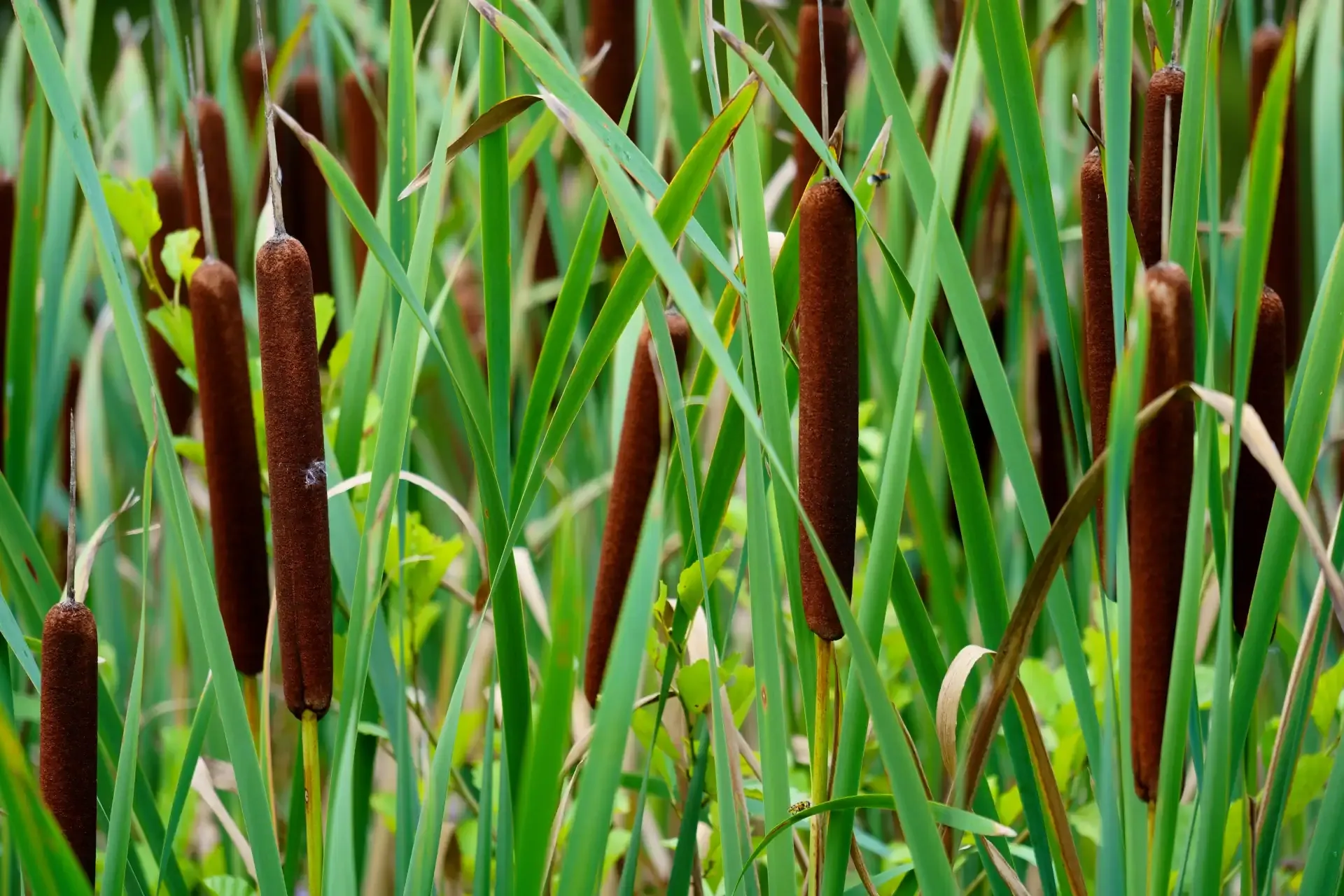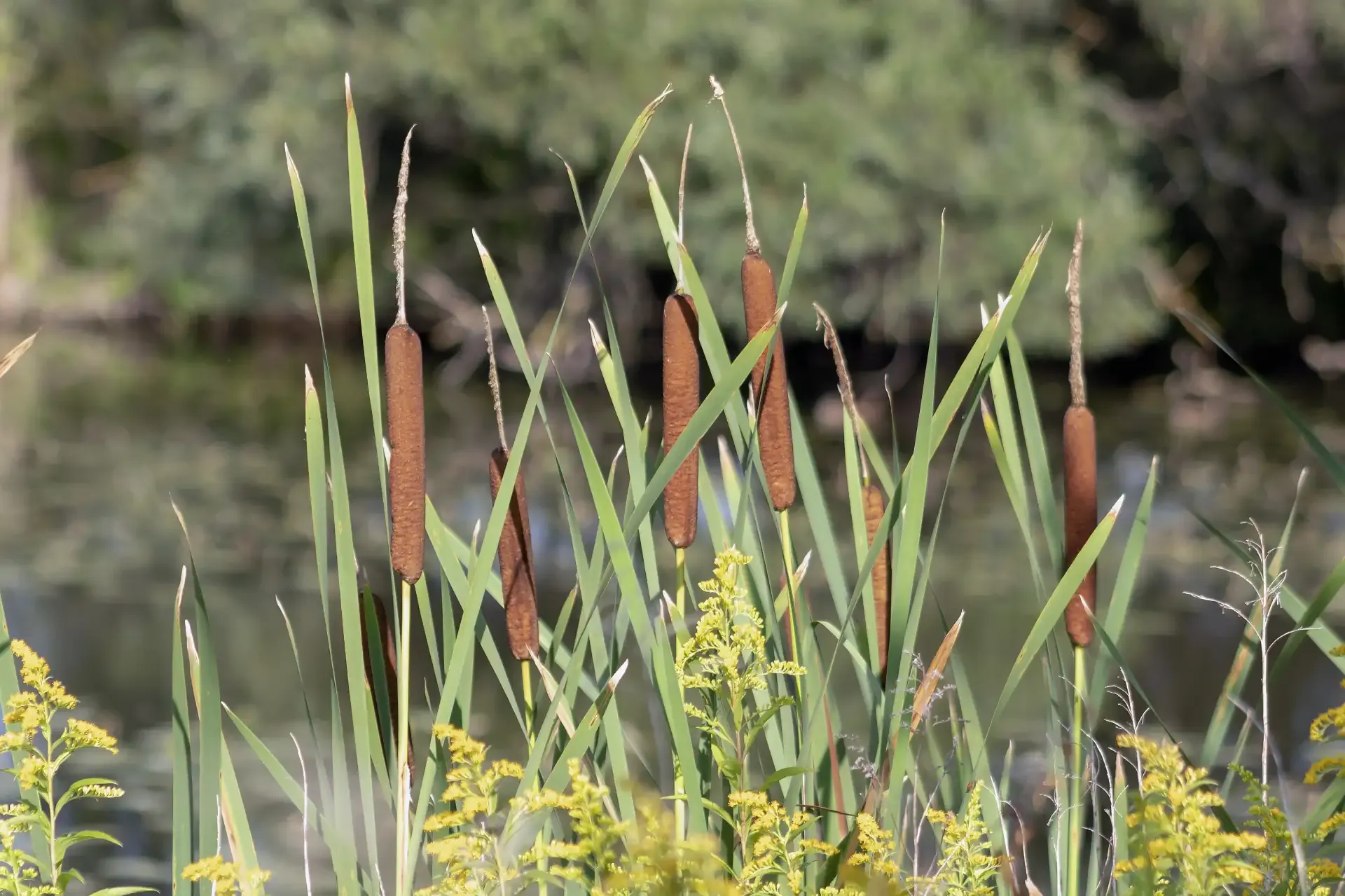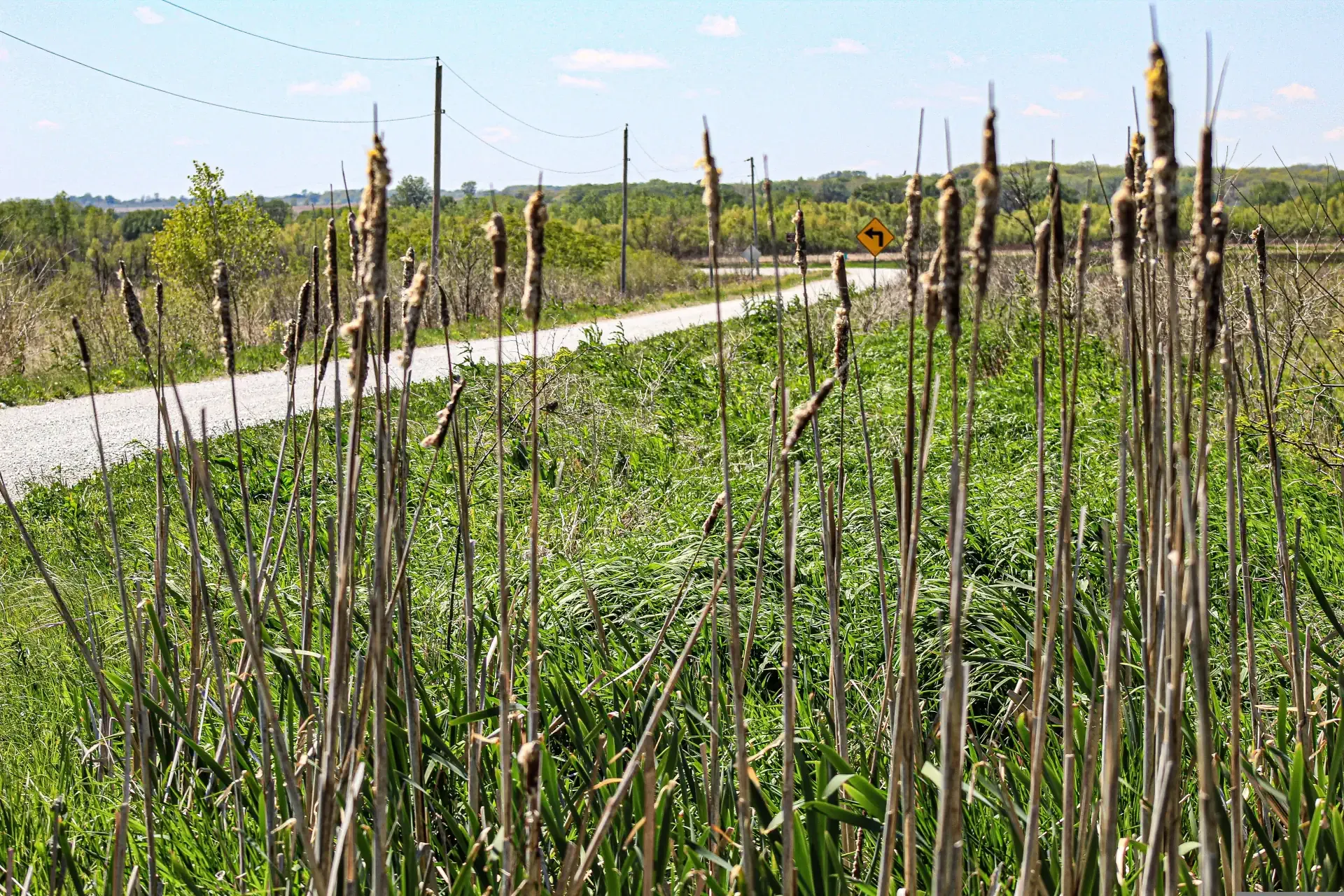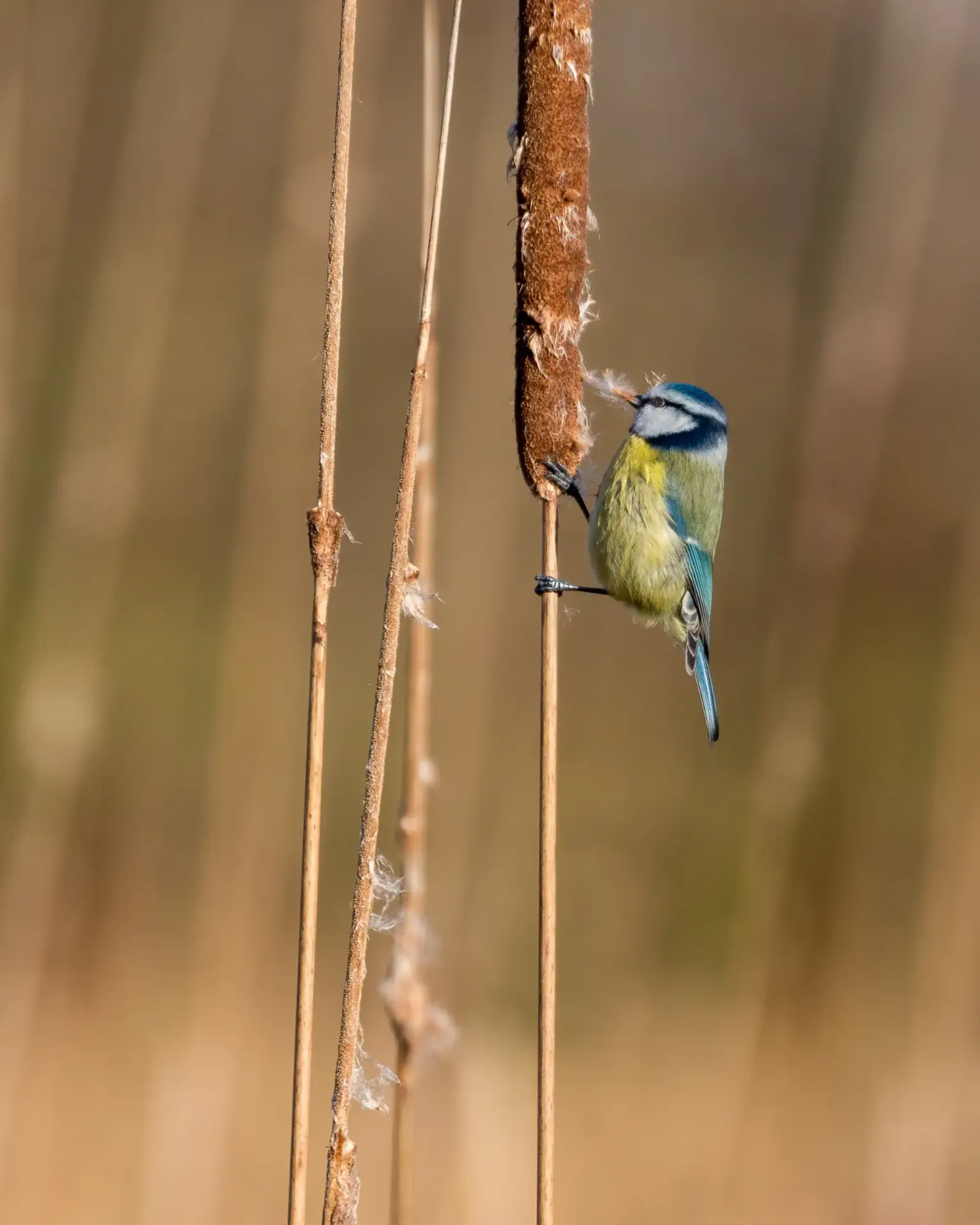Edible Wild Plants of the North Cariboo
Cattail
Submitted by: Ted Traer RPF Retired
Cattail
| Submitted by | Ted Traer RPF Retired |
| Plant Names - Common | Cattail, bulrush | |
| Plant Name - Latin (Scientific) | Typha latifolia | |
| Plant Name - Indigenous | Secwepemc | |
| Dakehl | ||
| Tsilhqot’in | ||
| Other English Names | Broadleaf Cattail | |
| French Names | ||

| Botanical Description | Typha are aquatic or semi-aquatic, upright perennial plants that emerge from creeping rhizomes. The long tapering leaves have smooth margins and are somewhat spongy. The tiny unisexual flowers are borne on a dense cylindrical spike, with the male flowers located above the female flowers | |
| Leaves | Typha latifolia grows 1.5 to 3 metres (5 to 10 feet) high and it has leaves 2–4 centimetres (3⁄4–11⁄2 inches) broad. It will generally grow from 0.75 to 1 m (2 to 3 ft) of water depth. The leaves are deciduous, appearing in spring and dying down in the autumn | |
| Stems | ||

| Flowers | The flowers form in a dense cluster at the top of the main stem; they are divided into a female portion below, and a tassel of male flowers above; the female and male parts are contiguous, which distinguishes the species readily from Typha angustifolia where there is a 3–8 cm gap of bare stem between the female and male flowers. Flowering is in June to July; after this, the male portion falls off, leaving the female portion to form a fruit head maturing into the familiar brown sausage-shaped spike | |
| Seeds | The seed heads persist through the winter, and then gradually break up in spring to release the tiny seeds embedded in hairs which assist with wind dispersal | |
| Habitat and Range | The genus is largely distributed in the Northern Hemisphere, where it is found in a variety of wetland habitats. It is found as a native plant species widely in Eurasia and North America, and more locally in Africa and South America. In Canada, it occurs in all provinces and also in the Yukon and Northwest Territories, and in the United States. Typha can be found in wetlands, sedge meadows, along slow moving streams, river banks, and lake shores. They can grow on a wide gradient of substrate types: wet pure sand, peat, clay and loamy soils. The plant is found in areas of widely fluctuating water levels such as roadside ditches, reservoirs and other disturbed wet soil areas | |

| Parts used | Some First Nations peoples sew cattails together for making mats, bags, baskets, or even tents. The stems and leaves of cattails sewn together to make paper and cloth. The entire plant is edible and is a traditional food source. Many parts of the Typha plant are edible to humans. Before the plant flowers, the tender inside of the shoots can be squeezed out and eaten raw or cooked. The starchy rihzomes are nutritious with a protein content comparable to that of maize or rice. They can be processed into a flour with 266 kcal per 100 grams, and are most often harvested from late autumn to early spring. They are fibrous, and the starch must be scraped or sucked from the tough fibers. Baby shoots emerging from the rhizomes, which are sometimes subterranean, can be picked and eaten raw. Also underground is a carbohydrate lump which can be peeled and eaten raw or cooked like a potato. The plant is one championed by survival experts because various parts can be eaten throughout the year. Plants growing in polluted water can accumulate lead and pesticide residues in their rhizomes, and these should not be eaten. The rind of young stems can be peeled off, and the tender white heart inside can be eaten raw or boiled and eaten like asparagus. This food has been popular among the Cossacks in Russia, and has been called "Cossack asparagus". The leaf bases can be eaten raw or cooked, especially in late spring when they are young and tender. In early summer the sheath can be removed from the developing green flower spike, which can then be boiled and eaten like corn on the cob. In mid-summer when the male flowers are mature, the pollen can be collected and used as a flour supplement or thickener. Uses: Used as padding for bedding, pillows & diapers. (Weiner) During World War II, the water-repellent and buoyant seeds were used by the U.S. Navy as substitute for kapok filler in life vests. Native Americans have used the feathery seeds for baby beds. When mixed with ash and lime, the seeds form cement that is reported to be harder than marble. For more than 10,000 years cattail leaves have provided Native Americans with a source for thatched roofs, woven floor mats and sandals. Leaves were twisted into rings and used under a collar to keep a horse’s neck from being injured. The stems produce a substance used as an adhesive. Cattails provide nesting sites for red-winged blackbirds, ducks, geese and fish. Nutria, muskrats and beavers enjoy the shoots and roots, while teal ducks, finches and least bitterns eat the seeds |
|
| Harvesting Practices | The seed hairs were used by some indigenous peoples as tinder for starting fires. Some tribes also used Typha down to line moccasins, and for bedding, diapers, baby powder, and cradle boards. Typha down is still used in some areas to stuff clothing items and pillows. Typha can be dipped in wax or fat and then lit as a candle, the stem serving as a wick. Without the use of wax or fat it will smolder slowly, somewhat like incense, and may repel insects. Typha stems and leaves can be used to make paper. It is strong with a heavy texture and it is hard to bleach, so it is not suitable for industrial production of graphical paper. The seeds have a high linoleic acid content and can be used to feed cattle and chickens |
|
| Special Considerations / Notes | It is not advisable to eat specimens deriving from polluted water as it absorbs pollutant. Specimens with a very bitter or spicy taste should not be eaten | |

